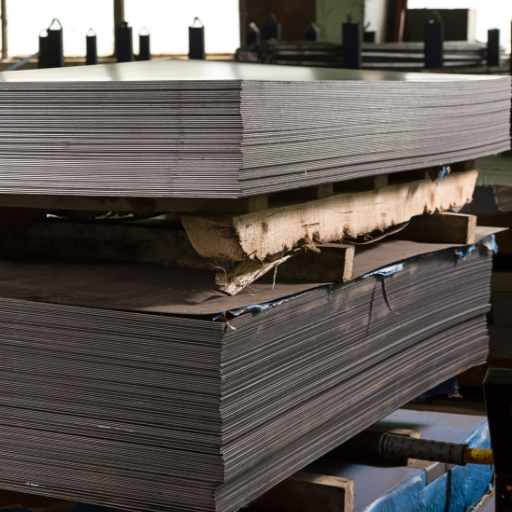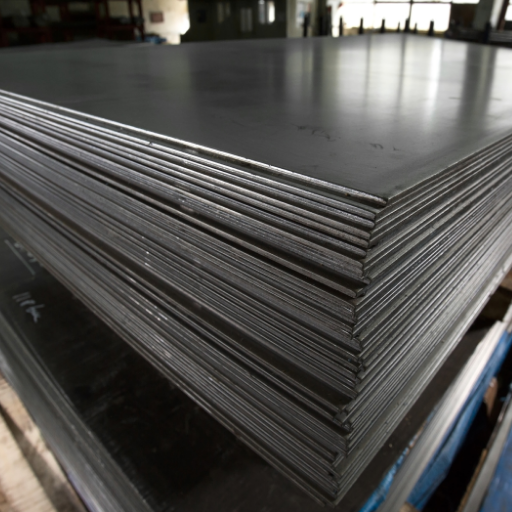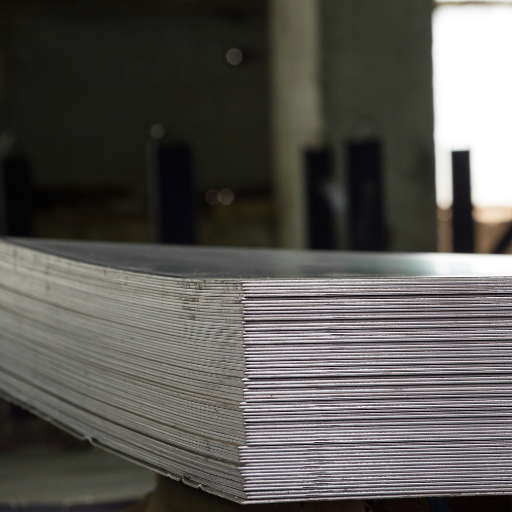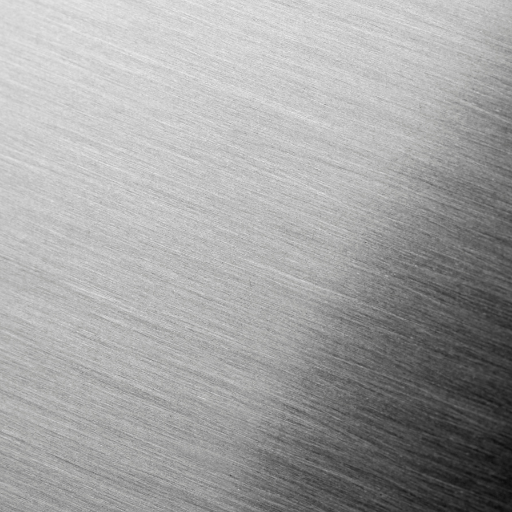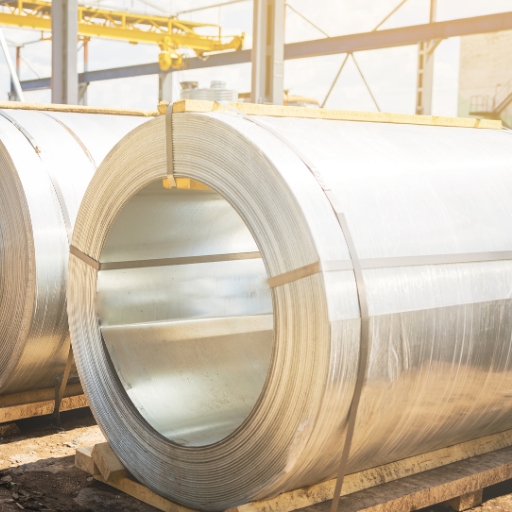Unmatched flexibility and intransigence distinguish stainless steel sheets as indispensable to various commercial, industrial, and domestic uses. This manual would offer a complete account on stainless steel sheets by addressing their grades, mechanical properties, and finishing options. Furthermore, the paper will look at various manufacturing processes involved in making the sheets with regard to the construction industry, automobiles, and household utilities. Having enough knowledge about the basics of stainless steel sheets is essential for anyone who wants to decide which one to buy for his or her specific use or any other applications. Such basic information will help make good choices that will eventually result into better performance and durability of stainless steel parts in different places.
What is a stainless steel sheet?
A stainless steel sheet is a commonly used flat and thin piece of stainless steel in various applications due to its excellent resistance to corrosion, durability, and appeal. These are mainly manufactured from iron, chromium and other alloys, chromium content present on the surface of steel imparts passivity as it’s oxidized into chromium oxide thus preventing rusting. Each grade/ thickness is designed for specific mechanical and environmental needs.Therefore widely applied in industries such as construction, automotive, household appliances where strength and low upkeep are important
Understanding the basics of stainless steel sheet
Stainless steel sheets are divided into different grades according to their chemical composition, directly affecting their mechanical properties and corrosion resistance. The most popular grades are 304, 316 and 430. Grade 304 is famous for its good formability and excellent corrosion resistance, it can be used in various applications. Usually, this grade contains 18% chromium and 8% nickel. On the other hand, grade 316 has a higher quantity of chromium (16%), nickel (10%), and molybdenum (2%), which makes it superior to pitting and crevice corrosion, especially in chloride environments. Conversely, grade 430 has cheaper price due to magnetic properties as well as its good formability since it only has carbon by about 0.12 percent.
The tensile strength of stainless steel sheets depends on the grade of the material itself and the heat treatment applied. For example, Grade 304 has an elongation at break of about 40% with a tensile strength around 505MPa, making it highly ductile, while its counterpart Grade 316 has tensile strength near to 515 MPa with almost similar elongation.
Stainless steel sheets come in several finishes, ranging from mill finishes to more refined surface types, such as brushed or mirror finishes. Each type of finishing affects the appearance of the sheet and its performance in specific applications. For example, a brush finish may improve aesthetic appeal and scratch resistance, while a mirror finish gives a brilliant, reflective high gloss that is easier to clean.
Typically, hot rolling, cold rolling, annealing, and descaling are involved during the manufacturing of stainless steel sheets.Hot rolling above the recrystallization point provides initial thicknesses and mechanical properties.Subsequent cold rolling refines thicknesses and enhances surface finish quality.Softening regains ductility and removes internal stresses, whereas cleaning removes surface oxide impurities.
The difference between stainless steel sheet and stainless steel plate
The difference between stainless steel sheets and stainless steel plates is mainly based on their thickness. A sheet of stainless steel is described as a flat-rolled product in which the thickness does not exceed 6.35 millimeters (0.25 inches). Conversely, a plate made of stainless steel is generally more than 6.35 millimeters thick, reaching many inches. This dissimilitude in thickness affects their respective applications and mechanical properties.
Stainless steel sheets are often used in items requiring flexibility and formability such as automotive panels, domestic appliances, and architectural cladding for applications. The thinner sheets make them more easy to shape and join together during fabrication procedures. In contrast, stainless steel plates are employed in structural applications where strength and toughness are paramount; examples include bridges, ships, pressure vessels.
Thickness also affects mechanical properties. The tensile strengths may differ along with elongation values among thinner sheets due to the reduced dimensions as well as different manufacturing methods they undergo. For example, grades of stainless sheet steels like 304 and 316 have tensile strengths around 505-515 MPa with break elongations of about 40%. Plates belonging to these grades usually maintain strong tensile strengths but can bear heavier loads due to an increase in thickness.
To sum up, when choosing between a stainless steel sheet or a plate made from the material a person must think over its thickness that defines suitability of the raw material for specific application needs while making decisions concerning mechanical demands.
What are the types of 304 stainless steel sheet available?
There are three categories of 304 stainless steel sheet which can be broadly grouped by their main finishes: 2B, BA, and No. 4 The most common finish for stainless steel sheets is a smooth, moderately reflective, cold-rolled finish called the 2B finish. BA or Bright Annealed has a mirror-like appearance that is achieved through annealing in an oxygen-free environment. No. 4 finish also known as brushed finish is characterized by its uniform, linear grain created mechanically polished; this helps to hide fingerprints and scratches.The different finishes are optimized for specific applications based on desired aesthetics, surface smoothness and level of reflectivity.
Properties of 304 Stainless Steel
Grade 304 stainless steel is renowned for strong and versatile characteristics whose use cuts across a wide range of industrial and domestic domains. Key features of the material include outstanding corrosion resistance, high tensile strength as well as excellent ductility. The alloy exhibits exceptional resistance to many corrosive media, including various atmospheric environments, making it suitable for chemical processing, food industry, and marine applications.
18-20% chromium and approximately between 8-10.5% nickel usually make up about 304 stainless steel, which provides its anti-corrosive properties; meanwhile, it has also tensile strength equal to nearly505-515 MPa yield strength of around215 MPa while break elongation is about40%. This enables it to be fabricated into any shape or structure through welding, forming among other processes.
The material can endure oxidation at temperatures up to 870°C (1600°F) as well as easy cleaning and maintenance, hence its common use in medical kitchens, architecture, etcetera As such, it is preferred across various uses due to its long-lasting strength that withstands environmental changes easily.
Uses of 304 Stainless Steel Sheet
Its durability, combined with ease of fabrication along with corrosion resistance, makes this material widely applied in several sectors.
For manufacturing processing equipment, storage tanks, and kitchen tools used in the food and beverage industry, 304 stainless steel is the best choice. This is mainly because it’s resistant to acid/alkaline solutions and it can maintain a hygienic condition thus meeting high sanitation standards.
Reactor construction pipe systems, heat exchangers are some of the areas where 304 stainless steel sheets are applied in chemical/petrochemical industries; these materials could withstand most chemicals that usually contaminate other metals hence having a long life span for industrial parts.
For architecture and construction purposes, 304 stainless steel is used in cladding handrails and structural components, among other things. Its resistance to environmental stresses coupled with low maintenance requirements make it the preferred choice in many building and design projects.
They are also sterile, biocompatible, and do not react with biological fluids, which makes them suitable for use as surgical instruments, medical devices, etc., used in medicine. Among them are 304 stainless steel sheets that have properties of sterility and nonreactivity against body fluids.
Each application has specific technical parameters: tensile strength (505-515 MPa), yield strength (about 215 MPa), elongation at break (approximately 40%), and oxidation resistance up to 870 °C (1600 °F). These data confirm the material’s versatility in various environments and applications.
Advantages of 304 in SS sheet metal
The composition and properties of 304 stainless steel sheet metal confer numerous benefits on it. One of its key advantages is its remarkable resistance to corrosion that makes it applicable both in acidic and alkaline environments. It has chromium, which imparts resistance against both rusting and oxidation by forming a chemically unreactive film on the surface. The technical parameters that back this include about 18-20% of chromium and around nickel content of 8–10.5%, hence bolstering its durability as well as longevity.
Mechanical qualities are another outstanding aspect of 304 stainless steel. Thus, it has tensile strength within the range of 505-515 MPa while its yield strength lies approximately at 215 MPa, thus ensuring that the alloy can withstand substantial stress without undergoing permanent deformation. Additionally, it has an elongation at a break value of around forty percent, indicating the ability to undergo stretching or shaping without failings during utilization. Thus, such attributes make this material especially good for applications that combine structural integrity with flexibility.
Another significant advantage involves high-temperature resistance exhibited by this material. For instance, this type remains stable up to temperatures around 870°C (1600°F), an essential property when dealing with intense heat conditions. This capability helps maintain the material’s stability even in an environment characterized with elevated temperature regimes while still retaining its strength and functionality.
Lastly, there are several reasons why many people prefer utilizing a type 304 stainless steel which include ease of fabrication and low maintenance costs involved among others. Its weldability, together with machinability, contributes towards making intricate components precisely as required during the manufacturing stage. Again, the smoothness finishing off the surface ensures no accumulation possibility for contaminants thus making cleaning less demanding particularly in hygienic industries like food industry or hospitals’ settings for easy maintenance purposes too (Jabbarzadegan & Nouranian, 2015). All these characteristics define the universal applicability and dependability of this type of stainless steel sheet metal as supported by its strong technical data.
What are the benefits of 316 stainless steel?
There are several advantages that 316 stainless steel has over many other materials used in these environments. The reputation of 316 stainless steel as having better corrosion resistance, especially in chloride atmospheres like shorelines and marine applications is thanks to the molybdenum it contains. This improved resistance helps decrease the chances of pitting and crevice corrosion. In addition, its superior mechanical properties at high temperatures keep providing stable and reliable performance under thermal stresses. Its increased tensile strength and yield strength than those of 304 stainless steel make it more durable for applications involving heavy loads.Furthermore, the grade has excellent weldability and formability which ensures easy fabrication of complex parts. For this reason, it finds application in industries such as marine environments and chemical processing, among others, including pharmaceuticals.
What is the difference between 316 and 304 stainless steels?
The critical differences between 316 Stainless Steel and its earlier version include their chemical composition, corrosion resistivity, as well as physical characteristics. The presence of molybdenum (2-3%) makes up for it giving a total sum with elements present in SS304 (chromium –18-20%; nickel –8-10.5%). Thus this type can last longer when exposed to chlorides compared to other industrial solvents because of molybdenum contenting it unlike others.
Superior performance against pitting crevice corrosion is seen in terms of corrosion resistance by comparing 316 and 304 grades. Unlike grade 304 whose tensile strength is limited to only about 485 MPa while also having an ultimate yield strength of around170 MPa, at room temperature type SAE316 features yields strength at a rate about515 Mpa with tensile strengths about205Mpa respectively producing higher mechanical properties useable even under harsher conditions including higher magnitudes stress levels at increased temperatures. Additionally, due to its increased resistance to both chemical attack and mechanical stress, it is more applicable to chemical processing industries, marine, and pharmaceuticals than both grades. To sum up these differences, this justifies the criteria used by taking into account properties from reliable materials science databases.
Superior corrosion resistance of 316
The presence of molybdenum in 316 stainless steel as against 304 type enhances its resistance to corrosive media. This leads to a reduced tendency for chloride pitting and crevice attack, hence making it most applicable in marine structures and infrastructures built along coastal lines. Additionally, 316 stainless steel withstands high salinity situations such as seawater and areas with exposure to de-icing salts. Moreover, it is much more resistant to chemicals and industrial solvents, which makes it suitable for use in chemical processing plants or even among other things like the pharmaceutical industry as compared with SS304. In these fields where cleanliness is mandatory at all times and immunity against acidic compounds is needed at a greater extent, reinforced strength together with resilience to rusting over time becomes vital on behalf of 316 stainless steel.
Some of the applications of 316 stainless steel in metal sheets
This is widely used for the manufacturing of high performance metal sheets in various applications. It is mainly used in marine industry to resist crevice and pitting corrosion from salt water. The addition of molybdenum (2-3%) enhances this resistance, leading to long term durability even when exposed to seawater. Further, the use of 316 stainless steel sheets in chemical processing industries is common due their ability to withstand very aggressive chemical environments such as acid or chloride-rich solutions. Being able to handle high temperatures (continuous service up to 870°C, intermittent service up to 925°C), makes it ideal for heat exchangers, evaporators or chemical tanks.
In terms of cleanliness and non-reactivity with pharmaceuticals, 316 stainless steel sheeting is popular in the pharmaceutical industry. The latter results from substantial amounts (>16-18%) chromium and nickel contents that create a passive film on the surface of the material thus preventing contamination. Lastly, the food and beverage sector favors 316 stainless steel, which has clean surfaces, because they are critical for maintaining hygiene during the food preparation process. Easy cleaning ability together with resistance against organic acids and fatty acids meets FDA regulations set under U.S food safety standards; hence it plays an important role in this industry.
What are the standard thicknesses for stainless steel sheet?
The standard thickness range for stainless steel sheets generally lies between 0.4 mm and 6 mm. Depending on the thickness, the sheets are classified as follows: up to 1mm, they are sometimes called foil or shim stock; between 1 mm and 3 mm, they are considered standard stainless steel sheets; while those over 3 mm but not more than 6 mm fall under heavy or thick gauge sheets category. Hence, these specifications support versatile use in industries right from lightweight structural components to heavy-duty equipment.
What thickness should you choose for your project?
- Mechanical Strength and Load-Bearing Requirements: For projects that require high load-bearing capability and durability, thicker sheets (3mm through to 6mm) would be ideal. Thicker sheets are stronger structurally and can better resist mechanical stress.
- Application Purpose: The desired application determines the thickness selection. For instance, decorative elements and lightweight structures often use thinner gauges (0.4mm to 1 mm) due to their ease of fabrication and lower weight compared with other gauges used in this context. Industrial equipment like heat exchangers or chemical tanks require medium/heavy gauge sheets (1-6mm) that must be strong enough against aggressive agents.
- Cost Considerations: In general, thicker sheets cost more, so it is important to strike a balance between budget constraints and required performance. Thinner sheeting may be possible to save money without compromising functionality.
2b mill finish for industrial applications
The most common finishes among stainless steels is the two B Mill Finish which has smooth, reflective and uniform surface properties. This finish involves cold rolling before being passed through heat treatment, pickling, finally finished by light roll pass.The resulting surface is a moderately reflective matte grey that brings significant advantages in various industrial applications.
- Surface Roughness (Ra Value): The roughness average (Ra) of a 2B finish is usually between 0.3 and 0.6 micrometers which makes it smoother than the another two (1D, 2D) yet less reflective than BA (Bright Annealed) finishes.
- Corrosion Resistance: The smooth surface of the 2B finish enhances its corrosion resistance, making it suitable for environments prone to oxidation and contamination. The pickling process removes impurities on the surface thus enhancing corrosion resistance.
- Thickness Tolerance: Cold-rolling allows for tight tolerance control in terms of thickness typically ±0.1mm in most industrial applications thus ensuring uniformity and consistent performance.
The advantage of this type of finishing is that it provides a clean aesthetic look with no high reflectivity found in brighter finishes. The moderate reflection serves well where both function and appearance are important such as kitchen equipment, chemical processing plants and architectural elements.The finish may also be used as a good starting point for additional polishing or brushing if one desires higher luster or special texture at all.
Types and Finishes of Stainless Steel Sheets
Different stainless steel sheets come in different forms and finishes, each serving specific purposes and meeting certain demands. These are some of the most used ones:
- 304 Stainless Steel: This is the most common stainless steel that represents the best corrosion resistance as well as formability. Applications vary from kitchen equipment to chemical vessels.
- 316 Stainless Steel: With molybdenum added, 316 stainless offers superior resistance to corrosion, particularly chloride-induced pitting and crevice attack, which makes it suitable for marine environments and pharmaceutical apparatus.
- 430 Stainless Steel: It is a ferritic grade with good corrosion resistance and formability but less than 304 or 316 so it finds its uses in domestic appliances and decorative applications.
In addition to the aforementioned 2B finish, other commonly used finishes include:
- No. 1 Finish: Obtained by hot-rolling followed by annealing and pickling, resulting in a rough, dull surface. Suitable for industrial applications where aesthetics are not considered important.
- No. 4 Finish: Done mechanically through polishing which gives a polished or satin appearance. It serves well in architectural and household use due to its combination of look and modest reflectivity.
- BA (Bright Annealed) Finish: Heat treated under controlled conditions of atmosphere to avoid scaling, leading to a highly reflective mirror-like surface commonly found in decorative metals applications such as the appliance industry.
These varieties of types and finishes serve diverse needs, ranging from high robustness needed for industrial-like projects up to aesthetic values that make designers or engineers get precisely what they want out of their materials.
Differences Between 2b Mill Finish and Brushed Finish
The 2B mill finish and the brushed finish (No. 4 finish) are significantly different in terms of their appearance, manufacturing process as well as usage. Cold rolling is followed by annealing and descaling to achieve a 2B mill finish. This results in a smooth, reflective surface with a dull, grayish look. It commonly has roughness average (Ra) values ranging between 0.1-0.5μm, which makes it suitable for industrial purposes where surface smoothness is crucial while attractiveness is secondary.
Brushed finish, on the other hand (No. 4 Finish), is created through mechanical polishing using abrasive belts or brushes, resulting in an even linear grain with satin or brushed-like appearances. The Ra range for this type of finishing is typically between 0.4-1μm thus offering moderate reflectivity and appealing aesthetics required for use in architecture and homes.
- 2B Mill Finish:
- Production: Cold rolled, annealed, and descaled.
- Appearance: Smooth, reflective, dull grey.
- Roughness average (Ra): 0.1 to 0.5 micrometers.
- Applications: Industrial use where surface smoothness and cleanliness are essential.
- Brushed Finish (No. 4 Finish):
- Production: Mechanically polished with abrasive belts or brushes.
- Appearance: Satin or brushed with linear grain.
- Roughness average (Ra): 0.4 to 1μmeters.
- Applications: Architectural, decorative, and household applications.
Uses for Annealed Stainless Steel Sheets
Annealed stainless steel plates are subjected to heat treatment that modifies their microstructures and enhances ductility and toughness. This makes them adaptable, accommodating various uses. In the field of construction, annealed stainless steel sheets find use in building elements like beams and columns for structural purposes as they have improved toughness and corrosion resistance. In food processing industry, they can be used to fabricate tanks, conveyor belts, and food containers with a smooth surface that is easy to clean hence maintaining high sanitation levels.
It is also employed in manufacturing different vehicle parts, such as exhaust systems and chassis used in the automotive industry, because it has good formability properties as well as resistance to high temperatures. They are also used in the aerospace industry for making aircraft fuselages which serve as its outer skin or bodies as well its engine components where strength-to-weight ratio is critical. Furthermore, in marine applications, annealed stainless steel sheets are applied to ship hulls and other parts exposed to sea water which has a higher salt content than fresh water so this material prevents corrosion by salt water.
Technically, the yield strength of annealed stainless steel varies between 30,000 PSI and 50,000 PSI. This is far below the strength exhibited by cold-worked steels, indicating that these materials become more ductile after being subjected to high-temperature conditions. Additionally internal stresses would be minimized while the material itself will be rendered more machinable thereby increasing its range of usage when it comes into contact with welding process or machining operations if we take into consideration annealed state of metal samples produced from stainless steel intermediary products like bars or plates during forging stage.
How to Choose the Right Stainless Steel Sheet?
There are a few things to consider when you are choosing the perfect stainless steel sheet for your needs. First, take into consideration what grade of stainless steel is right for you; commonly used grades such as 304 and 316 have good corrosion resistance with the latter being better due to the higher molybdenum content it has. Another point is that thickness of the material also comes into play; thin sheets bend easier while thick ones break less easily. Thirdly, determine what type of finish you need on your sheet; whether you want a mill finish, brushed, or mirror finish which may affect its appearance and suitability in terms of cleaning. Similarly, look at environmental conditions under which metals will be used because these could dictate which alloy should be employed to withstand such conditions especially when heating or corrosive substances are involved. Finally, establish if additional processes like annealing, cold-rolling and surface coating should be done so that your project specifications can be met fully. The above factors combined will ensure that the chosen stainless steel sheet performs well in its intended application.
Considerations when ordering custom-cut stainless steel sheets
When ordering custom-cut stainless steel sheets several factors must be taken into account to ensure that the final product meets your exact requirements. First, accuracy in cutting is key. Laser cutting offers an accuracy range of ±0.005 inches making it one of the most accurate techniques available today. It leaves no burr behind on cut edges thus retaining original material integrity (Fiberon Technologies). Secondly the type of metal along with its properties also matter. The commonest examples include 304 or 316 which have different levels of corrosion resistance and strength (Hairapetyan). For instance, while tensile strength for type 304 stands at about 73,200 PSI, that for type 316 is roughly 80,000 PSI (Carpenter’s Stainless Steels Blue Book). Finally finishes applied on stainless steel sheets influence their appearance and utility. Some of the most frequently used ones include No.4 (brushed) and No.8 (mirror), which have a Ra value of approximately 25-30 microinches and 2-5 microinches, respectively. Every finish is suitable for a particular need depending on whether it is aesthetics or ease in cleaning that matters most to you. Also consider secondary operations like bending, welding, or surface treatment required by applications.
The importance of corrosion resistance
Stainless steel sheets are chosen based on their ability to resist corrosion which is vital for maintaining durability and length of service for many applications we have today. Very simply, stainless steel contains chromium, which reacts with oxygen in the air to form a protective molecular layer of chromium oxide on its surface, preventing any further oxidation reactions from taking place within the metal (Totten et al). For example, stainless steel grade 304 contains approximately 18% chromium making it resistant to many environments (Carpenter’s Stainless Steels Blue Book). On the other hand, grade 316 composition comprises about 16-18% chromuim plus molybdenum content between 2% – 3%, thus allowing better resistance against chlorides as well as acidic conditions found in chemical industries and marine sectors.
In both industrial and architectural settings this increased life expectancy means lower maintenance costs over time with fewer replacements needed. This can be measured using technical properties such as pitting resistance equivalent number (PREN), whereby higher values indicate greater resistance characteristics. For instance, when compared with the approximate PREN range of fifteen to eighteen percent for grade A304 austenitic stainless steels, grades A316L will exhibit values close to twenty-three through twenty-eight due to molybdenum concentrations present in them(Carpenter Technology Corporation).
While you are considering the conditions of that environment, go through the technical specifications. Given the corrosive nature of some environments, such as chloride ion concentrations and temperature ranges, it is important to include these details in such specifications. Specifying the right grade and taking into account these factors could ensure that stainless steel remains structurally sound and visually appealing even after prolonged exposure.
Frequently Asked Questions (FAQs)
Q: What are the common uses for a stainless steel plate?
A: Stainless steel plates have a wide range of applications including construction, kitchen diy craft making, automotive, and industrial settings. They are often used in environments where corrosion resistance is crucial.
Q: How does 430 stainless steel differ from other types of stainless steel?
A: 430 stainless steel is a ferritic, non-hardenable grade that offers good corrosion resistance and formability along with practical mechanical properties. Unlike austenitic grades, it doesn’t contain nickel, which means it is less expensive but also offers lower robustness in specific conditions.
Q: What thickness is available for stainless steel shim plates?
A: Stainless steel shim plates come in various thicknesses. Common inch thickness stainless steel shim options include 0.004″ to 0.125″. The thickness stainless steel shim plates can be custom cut to meet specific requirements.
Q: What is the benefit of using cold rolled stainless steel sheets?
A: Cold rolled stainless steel sheets offer a superior surface finish and increased strength compared to hot rolled sheets. This process enhances the material’s tolerance and straightness, making it ideal for precise applications like metal plates for magnetic mount.
Q: Can stainless steel sheet metals be custom cut?
A: Yes, stainless steel sheet metals can be custom cut to your specifications. Custom cutting allows for precise dimensions and shapes to meet specific application requirements.
Q: What is stainless steel shim stock and where is it used?
A: Stainless steel shim stock is a thin and flexible material used for precision aligning, spacing, and adjusting of machinery and components. It is commonly used in industrial settings for calibration and leveling purposes.
Q: What does “4 brushed finish” mean?
A: A “4 brushed finish” refers to a specific surface finish of stainless steel sheets where the surface is brushed with fine abrasive materials to create a distinct, linear brushed pattern. This finish is popular for both aesthetic and functional applications, including kitchen appliances and architectural elements.
Q: How does annealing affect stainless steel plates?
A: Annealing is a heat treatment process that alters the microstructure of stainless steel to reduce its hardness, increase ductility, and improve overall mechanical properties. This process is crucial for making the steel easier to work with during fabrication and forming.
Q: Are there specific grades of stainless steel sheets for magnetic applications?
A: Yes, specific grades like the 430 stainless steel sheet metal are often used for magnetic applications. These inch metal plates for magnetic mount are chosen for their ferritic structure, which provides magnetic properties suitable for various uses.



